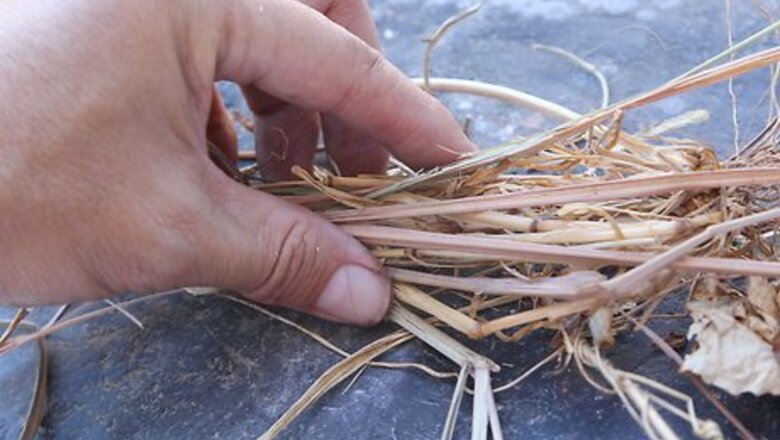
views
Building a Decorative Nest
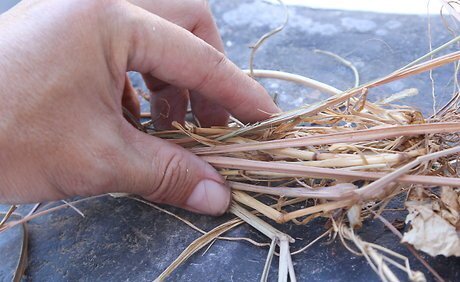
Find long, flexible plant stems. These will form the main shape of the nest, and are much easier to work with than hard, short twigs. You can use straw, long grass, vines, willow fronds, bendy reeds, or seagrass found outdoors or at a garden supply store. Raffia is another good option, obtainable from a craft supply store. If Mexican feather grass grows in your area, grab a clump of it and pull your hand upward to remove a handful of hairy seeds clinging together. Once you have enough seeds, clump them into a ball and make a nest shape by sticking your thumb into it.
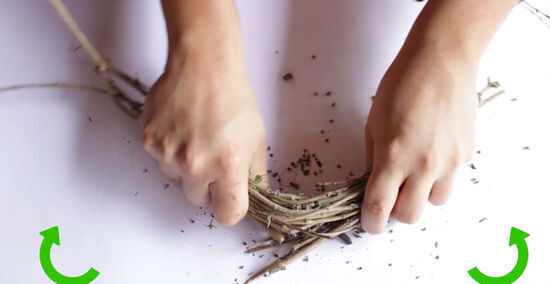
Bend the stems into a loop. Grab a thick handful of the stems, and bend them into a U shape, adding more stems if necessary to form a full circle. Tie it in place using a piece of string or florist wire. If the plant stems have many little leaves, or if they're wiry and dry, you can even weave them together without using any attachment. If tying the nest together is too hard, you can clip them temporarily in place while waiting for glue to dry. Don't use glue if you plan to keep the nest outdoors. If your fresh-cut plants won't stay in position, try hanging up the bundle in a windy area to dry for 24 hours. Some plant stems are easier to bend when fresh, but grasses and straw benefit from drying.
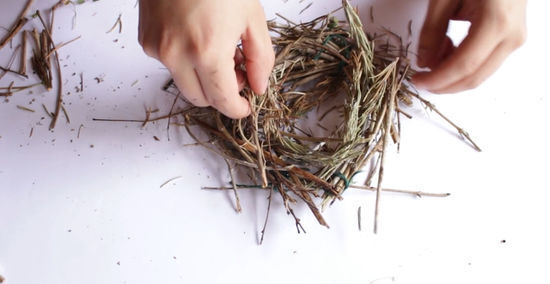
Shape the rest of the nest. Grab a second, smaller handful of stems and shape it into a smaller loop. Wedge this inside the larger loop and push it downward to form the base of the loop. Depending on how well the stems fit together and how sturdy you want the nest to be, you may need to use a thread or glue to fasten the two loops together.
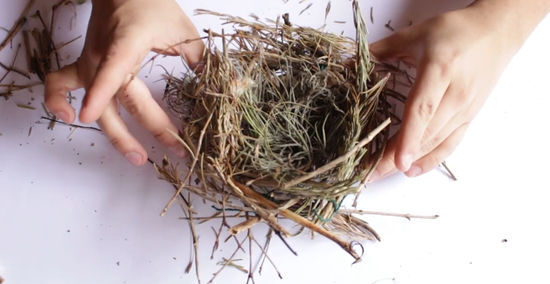
Decorate with scavenged materials. Real birds sometimes spend days collecting bits and pieces to build a nest. Hopefully you're a little faster, but you can still have fun gathering objects from nature or your craft boxes. Here are some ideas to get you started: If you plan to leave the nest outside, only use materials found outdoors, and nothing that could hurt an animal. Feathers and pieces of eggshell fit the theme. Be aware that collecting most wild feathers is illegal in the United States, but they are mostly harmless from a disease perspective. Look for twigs, leaves, bark, and moss in interesting shapes and colors. If the nest is for indoor decoration, you can use bits of string, colored paper shreds, and confetti.
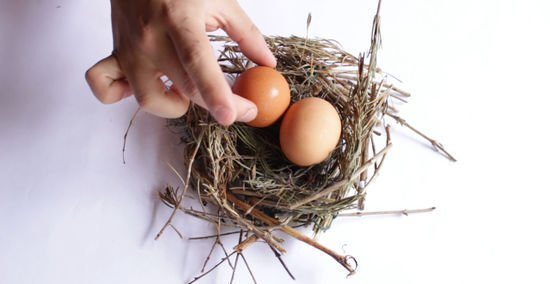
Place eggs inside (optional). Finish your art project by placing eggs or fake eggs inside the nest. You can quickly add marbles or colorful pebbles, or hollow out real eggs, decorate them, or even carve them if you have the right tools.
Attracting Wild Birds to Nearby Nests
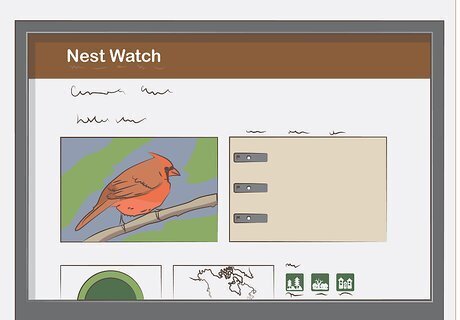
Look up the nesting habits of local birds. Find a local wildlife guide at a library or bookstore, or search online for information on local birds. Choose one or more species you want to attract, and look up their nesting habits to discover what shape and style of nest will be most effective. If you live in North America, NestWatch is an excellent resource for nesting information, and one you can expand with your own data.
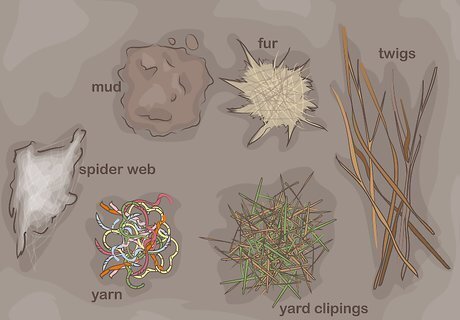
Leave nesting material in your yard. This is an easy way to attract birds, and might be worth it even if you end up building a full nest as well. If you managed to find specific nesting information, you'll know what materials to leave, but you can't go wrong with a few items from the following list, left in visible locations: Rigid twigs (for platform nest species) and flexible ones (for cup nest species) Yard clippings such as dry grass and straw, bits of bark and moss, dead leaves, etc. Human or animal hair or fur (no longer than 6 inches / 15 centimeters) Yarn or string Mud, spiderwebs, and/or caterpillar cocoons to help birds bind nesting materials together Never leave out materials that have come into contact with harsh chemicals, including dye, pesticides, or anti-flea treatments. Dryer lint and clothing rags are not recommended.
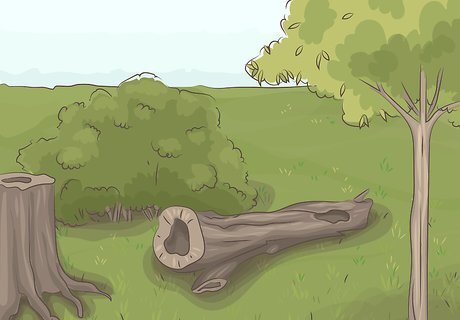
Provide a variety of plants. If you want to attract birds that make nests in existing holes, leave dead tree stumps and fallen logs in the yard. Living trees and bushes will attract more visible nests from other species, especially if the plants are native to your area. For best results, plant a "staircase" of grass or moss, flowering perennials, shrubs, and trees.

Build a nesting box. If there aren't obvious crevices or hollows in your yard, building a nesting box or birdhouse is a simple carpentry project. Make sure the birdhouse is constructed to match the size of the birds you want to attract, or the size of the birds you see flying near your home. For a higher chance of success, follow birdhouse building instructions specific to common North American species. Clean out the birdhouse regularly whenever birds are not nesting.
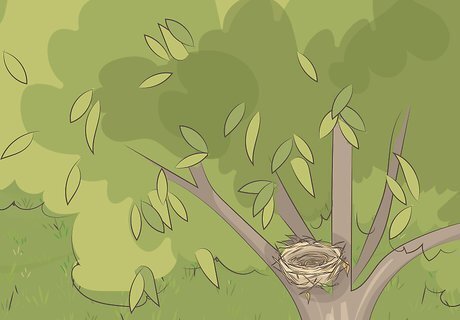
Make a bird's nest. Many birds prefer to make their own nest rather than move in to a ready-made one. Lining natural hollows with the nesting materials listed above may give a bird an attractive head start. If you want to make a different type of nest, such as a cup or platform nest, it's best to follow the specific habits of the bird species you want to attract. Each species tends to prefer certain materials. Placement of the nest is also important. Many bird species hide their nest amidst thick branches, but some prefer more open branches, bushes, or open patches of ground. Look for more information on NestWatch, through online searches, or in a local bird nest identification guide.















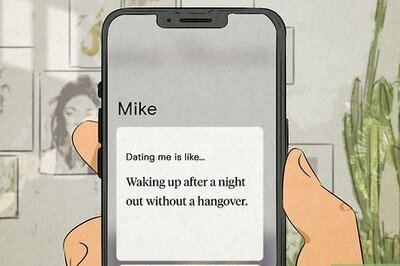

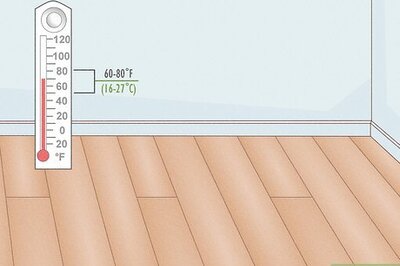

Comments
0 comment